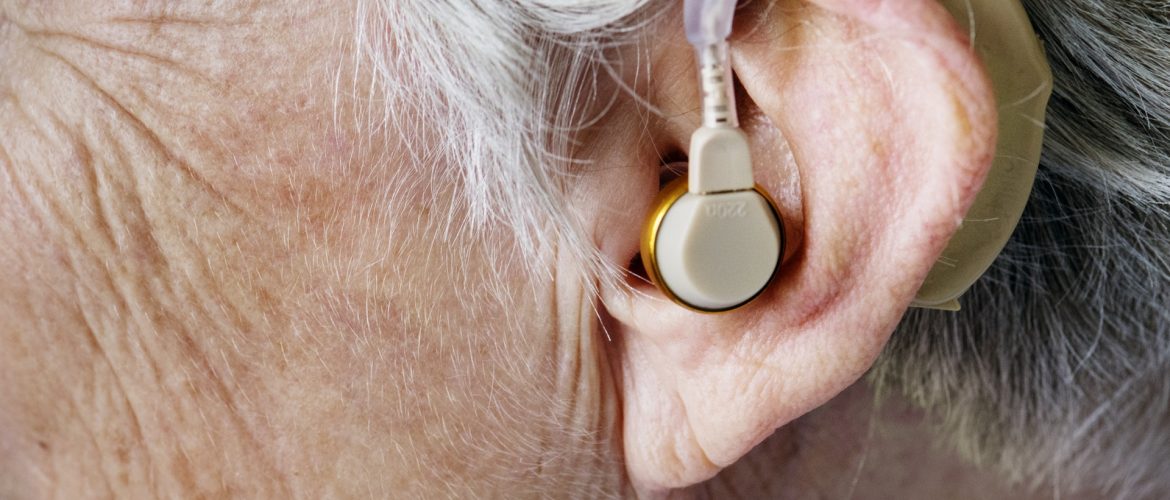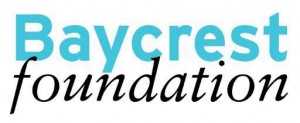For National Audiology Month, our guest blogger Laurie Orlov writes about hearing-related tech. You can also learn more about the CABHI project empowering seniors through hearing.
Uncorrected hearing loss isolates and harms older adults. One in three between age 65 and 74 has hearing loss, and nearly half of people aged 75+ have some significant level of hearing loss. Note that hearing loss has been linked to dementia and to social isolation – and that in turn has been connected to poorer health outcomes. Furthermore, wearing hearing aids has been linked to fewer hospital visits. According to studies, among adults aged 70 and older with hearing loss who could benefit from hearing aids, fewer than one in five (20 percent) has ever used them. Why such a small percentage? Experts believe that it is a combination of denial, belief that hearing loss is not severe enough, perceived stigma associated with wearing hearing aids, and a perception that they cost too much.
The market is changing – and older adults can and should benefit. At some point, family members and professionals may notice an individual’s hearing loss and may express concern. Especially now that hearing loss has been linked to an increased risk of dementia, the baby boomer population may be open to corrective possibilities before age-related hearing loss worsens and isolates them from peers and family. Experts also see the trend in self-care for all types of health concerns now includes hearing loss. Today there are numerous options for evaluating hearing loss, pricing and purchasing devices that should be part of organization and family approaches.
Recognizing this, retailers – in store and online – see a business opportunity. Audiologists recognize that their focus may have evolved to provide hearing tests as a process step for fitting an individual with appropriate hearing aids – and perhaps less on providing lower cost options such as teaching coping strategies that may be no cost or low cost. In addition, more recently the hearing aid vendors have been pressured to lower prices or offer lower-cost alternatives. Already making their way, these offerings are in the Canadian market. For consumers and professionals, consider the role of:
- Amplified TV sound, amplified phones, and visual indicators. Consumer Reports recently updated its recommendations for improving TV sound for those with some hearing loss. These can include stethosets (wireless hearing headsets), headphones, and soundbar speakers, among other options. Amplified phones are designed for people with hearing loss and may be with cords or cordless, wall-mounted or table mounted – and may include large buttons and/or pictures of frequently dialled contacts. They may be appropriate for individuals who have difficulty hearing a phone ring or hearing parts of conversations that may include higher frequencies. They may have visual indicators (like flashing lights) as a way to alert an individual to a phone call or an emergency.
- Training people on tactics after self-administered hearing tests. Anyone can give self-testing a try in the privacy of their own home. A self-administered online test like this Speech-to-Noise variant can help individuals or caregivers with an assessment of their ability to understand others in potentially noisy environments. In addition, people, friends or caregivers can ensure that older adults can see their faces, especially mouth, when they are talking to one another. There is even a guide to multiple online hearing tests – from calibrated pure-tone tests to uncalibrated tests, including Speech-to-Noise. With appropriate guidance, individuals can be offered further suggestions about the differences between Personal Sound Amplification Products (PSAPs) and whether they are an appropriate next step.
- PSAPs – limited research, but possible benefits noted. In 2017, Consumer Reports published test results of 18 of these amplification offerings for “individuals with mild to moderate hearing loss,” ranging in price up to $500 each, noting that prescription hearing aids generally start around $1650, inclusive of audiologist fees. One 2017 JAMA-published study compared the capability of several PSAPs to hearing aids and noted comparable benefit for at least one of them. Another research study in 2017 examined the utility of direct-to-consumer offerings, including direct mail hearing aids, and concluded that there was benefit – but noting that research has been limited. Guides to PSAPs are regularly updated, including 2018 lists from Everyday Hearing and The Wirecutter. Also consider commentary about category, which for some, are in the ‘ears’ of the wearer.
- FDA – Making the definitional matter worse. The widely quoted definition of hearing aids comes from the US Food and Drug Administration: “Any wearable instrument or device designed for, offered for the purpose of, or represented as aiding persons with or compensating for, impaired hearing…only available from licensed providers.” The FDA provides a guide which has no doubt worsened market confusion about PSAPs, defining their purpose “to increase environmental sounds for non-hearing impaired consumers. Examples of situations when these products would be used include hunting (listening for prey), bird watching, listening to a lecture with a distant speaker, and listening to soft sounds that would be difficult for normal hearing individuals to hear…”
- Along came hearables – wireless earbuds and other variants. Sometimes referred to as ‘smart headphones,‘ these can be placed in-ear as earbuds or as headphones, to enhance the listening experience and also have a 2018 ‘complete guide’ on Everyday Hearing, a prediction that these are the next big wearable platform, or this set of ‘best’’ from a site called “Wareable” – tech for your connected self. In reality, the hearables market appears to be the one focused on the ‘recreational’ use the FDA has applied to PSAPs.
- Self-care smartphone apps. There is an app for every hearing-related purpose. These range from smartphone control of hearing aids, or self-testing of hearing, to apps for improvement of hearing, apps for captioning, enabling deaf parents to hear a crying baby, to an online reseller website like TruHear to a captioning app for smartphones. And the biggest list of all for consumers, the 70+ best apps for each specific use.
Laurie M. Orlov, a tech industry veteran, writer, speaker and elder care advocate, is the founder of Aging in Place Technology Watch — market research that provides thought leadership, analysis and guidance about technologies and services that enable boomers and seniors to remain longer in their home of choice.


